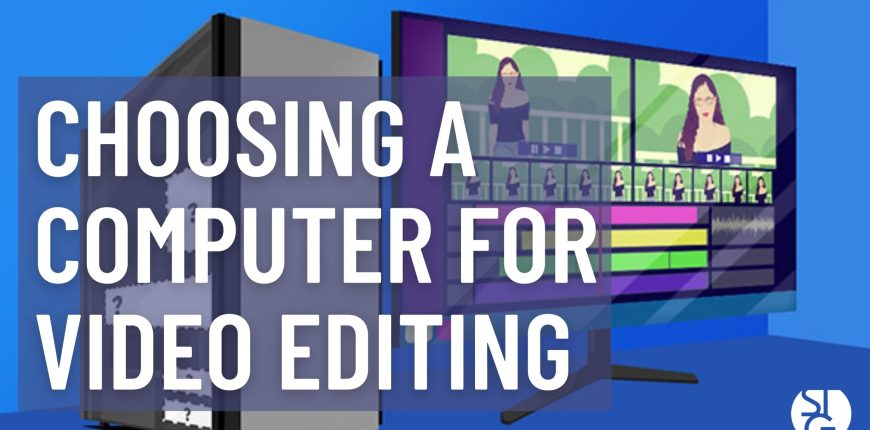Are you ready to be the next TikTok sensation? Perhaps you want to go viral with a video of your cockatoo “singing” “Amazing Grace.” You might also work from home and create promotional videos for your business. There are a variety of reasons why you would want to find the best home PC for video editing. Let’s assist you in choosing a computer for video editing.
Yes, it has become convenient to make edits on your phone or tablet. But if you want to do your footage justice, you’ll want to invest in the right equipment. Processor speed, memory, storage capacity, and graphics cards are all factors you need to consider.
Know what your CPU is capable of
Whatever your video editing goals are, you’ll need a lot of processing power to get the job done right. Basically, you want the best computer processing unit (CPU) you can get.
Certain video editing softwares use multiple cores. Think of it like one person completing tasks using multiple arms. Single-core video software, on the other hand, just has one arm. If you only have one arm, you should make it as powerful as possible, which requires the fasted processing speed you can get.
When adding features such as titles, visual effects and audio effects, it requires more processing power. All of your efforts need to compile, encode and compress into the final video cut. Therefore, CPU performance is important.
Core memories require RAM
You may be someone who loves making home movies to share with your friends and family. Whether you’re recording personal footage or creating commercial-quality videos, consider the memory (RAM) you have.
RAM is comparable to the amount of desk or elbow room you have to do your job. You most likely need more space to finish a larger job, whether you have one or several arms.
At a minimum, you’ll need at least 16GB to do any video editing. If you’ll be editing long videos or have a lot of footage, a 32GB or even 64GB memory drive is imperative.
Upgraded Storage
It is easy to forget about storage, but it is critical for video editing.
To edit videos, you’ll require a solid-state drive (SSD). Old “spinner” drives function similarly to a record player. The “needle” must physically move to the position on the platter where the file is located, which takes a long time. SSDs are instantaneous because they store data using flash memory. This allows you to do your tasks much more quickly.
What’s the drawback? SSDs lack the storage capacity of older spinners. In general, we recommend using an SSD to work on video files and then store them on an old, huge storage spinner.
Look into using a graphics card
Video editing does not require the use of a graphics card. However, they can really come in handy when you are video editing. You may not need a dedicated graphics card if you only use beginner- or intermediate- level editing software, but there is a performance gain. When you use a good graphics card, your overall performance gets a boost. Both DaVinci Resolve and Premiere Pro, which are available for free, work well with AMD and NVIDIA graphics cards.
Build with a professional
Working with a professional to build your PC is the best way to get the dream video editing computer you require. They’ll have the best opinion when choosing a computer for video editing. You can discuss the different types on videos you edit and the tools you use. Our experts can tailor a system to your needs and budget.
Check out our blog discussing the best way to buy a computer.
Call us at (323) 761-2634. We’d be happy to assist you and all your technology needs.
We are located in West Hollywood, servicing the greater Los Angeles area!

